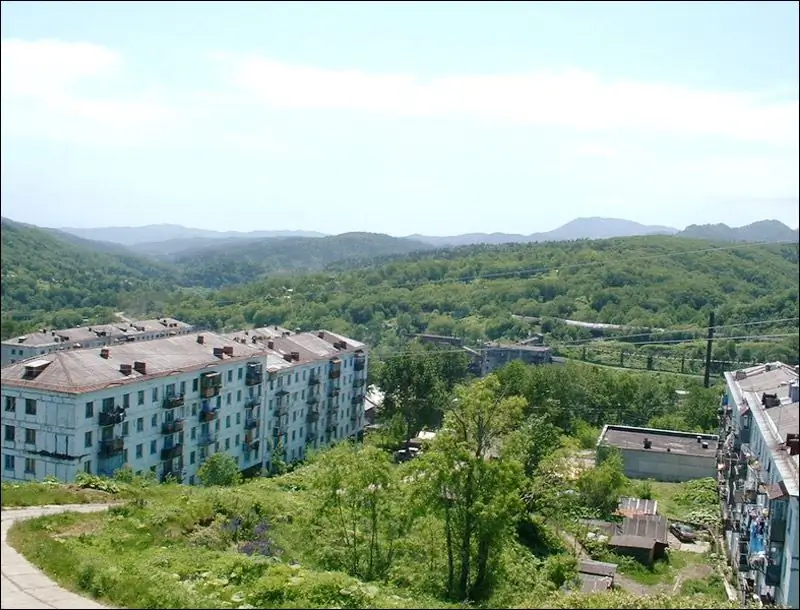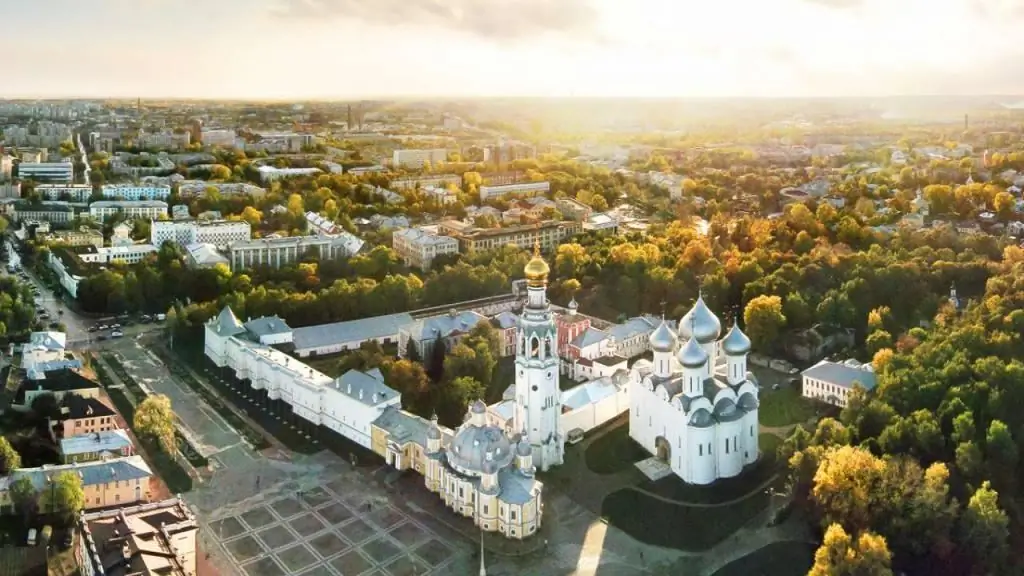- Author Harold Hamphrey [email protected].
- Public 2023-12-17 10:06.
- Last modified 2025-01-24 11:10.
If one day you happen to visit France, do not miss the opportunity to visit a very picturesque part of it, located in the heart of the country, at the crossroads of all European roads - Burgundy. The capital of Burgundy is the city of Dijon, its historical, cultural and economic center, the place where the tourist activity of the entire region is concentrated. You can get acquainted with the sights of France and Dijon, as well as see photos with descriptions in this article.
Walking through the streets of the city

In pursuit of the goal to get acquainted with the history of the city and see the sights of Dijon, once in the very center, we will rush along the narrow cobbled streets past the multi-colored shop windows of cozy shops, past small semi-basements offering cute metal fairies, funny gnomes and frightening monsters for a rather big price. All these treasures contain the most valuable thing that you can take away from a trip to these parts - the imperishable spirit of ancient France, which is herefelt literally everywhere. He is in the charm of Dijon houses with multi-colored tiles, immersed in flowering rose bushes, which, by the way, practically do not strive to stand out among others of their own kind. This spirit also lives in street musicians and in eccentric performances organized right on the central city square by some French buffoons, and in the monumental grandeur of architectural monuments of the past, it also lives under the vaults of majestic, but gloomy Gothic cathedrals.
In Search of the Mystic Owl
Probably, the main route, which from the very first minutes is offered to every newly arrived tourist, is following the numerous signs with the image of the emblem of the city - an owl. Winding through the old streets, trying not to miss the trace of this symbol of the city, either printed with arrows on the walls or engraved on the cobbled pavement, you finally approach the goal in order to touch the city “shrine” together with everyone, rub it for good luck and already almost worn out stone, fall in joyful jubilation to a pretty image of a wise animal. After that, you can, with a clear conscience, set off in search of new exciting discoveries. New sights of Dijon ahead!

Palace of the Dukes and Estates of Burgundy
Dijon is the ancient capital of the Burgundian duchy, and everything here reminds of this glorious and not very historical period in the life of the city. Dijon is unanimously recognized as one of the most beautiful historical centers of France. city of historyand art, the city of a hundred bell towers. It received this name not by chance. It is explained by a large number of churches and cathedrals - monuments of Catholicism.
You can start your acquaintance with the history of Dijon right from here, from the central city square, where one of the first attractions is located - the palace of the dukes and estates of Burgundy. Behind the beautiful classical facade of the building lies a centuries-old, eventful history. The former dwelling of the dukes, rebuilt in the 15th century by Philip the Good and became the royal residence. Currently, the palace includes the city hall, the art museum, the municipal archives and even the tourist office. The tower of Philip the Good, towering in the center of this architectural ensemble, embodies a symbol of power over the city.
Art Museum
One of the oldest museums in France, located on the territory of the Palace of the Dukes and Estates, contains the historical and cultural heritage of the entire region. The collections of the Museum of Art are recognized as one of the richest in France. The most famous historical monument is, of course, the tomb of the Dukes of Burgundy.

In the museum itself, by the way, you can take unforgettable photos of the sights of Dijon. After the obligatory visit to the museum, which is also completely free, you can relax a bit and have a cup of coffee right here on the terrace.
A little food trip
Since ancient times, the people of Burgundy, and especially the Dijonians, had a well-deserved reputationrefined gourmets. A country of vineyards, fertile lands, endless pastures, Burgundy seemed destined to discover new varieties of wine and cheese to the world. The most famous local product known to all mankind is, of course, Dijon mustard. This dish is a kind of sauce, very delicate and fragrant, having almost nothing to do with mustard in the traditional sense. The history of Dijon mustard began in the 14th century, when its production was legalized by a special ordinance, and later numerous mustard productions began to be created. In the 18th century, the use of the juice of unripe grapes brought to perfection the exquisite taste of the famous product. Nowadays, for practical reasons, grape juice has been replaced by wine vinegar. This forested region with calcareous soil, once the land of coal miners, is especially favorable for growing strong and spicy mustard seeds.
Excursion to the city market

In order to fully appreciate the taste of local products, you should definitely visit the city market. The large covered pavilion, whose facades are decorated with ornaments with elements of the pattern of Dijon roofs, is in itself the center of colors, smells and local color. Inside, wandering along the long rows, it is impossible to pass by scatterings of cheese heads of all colors and sizes, past plump chickens hanging by the leg, handsome roosters, beckoning buyers with their bright plumage. All this colorful cycle does not let go of the attention of visitors for a long time. Interestingly, the roofThe market pavilion was designed by Gustave Eiffel, one of the famous residents of the city. Under this roof there are more than 250 stands, each of which presents its products. Andoulettes, snails, truffles, the famous sheep cheese and Burgundy beef, a variety of homemade sausages, spicy Dijon bread and more…
Walk in the parks
After visiting historical sites and visiting the local market, we will walk a little more and find ourselves in the shade of the emerald green of parks, in the coolness of which it is so good to spend part of a hot summer day! The city impresses with an abundance of green islands and islets. Indeed, on the territory of Dijon there are a large number of gardens and parks, the total area of which exceeds 700 hectares. The most famous of them are Colombière and Clemenceau parks. In Colombière Park, you can find one of the roads of the Roman Way, crossing many cities of modern Gaul, as well as a sundial. Children will appreciate the wildlife park and large play areas. This place is especially good for outdoor activities, where you can comfortably sit right on the grass, in the thickets of hornbeam trees.

Vineyards of Burgundy
A no less attractive picture will appear before the eyes of a traveler who has left the capital and ended up in its environs. Any tourist will be able to find interesting places and sights around Dijon. Almost throughout Burgundy, you can find trails and roads leading to some kind of medieval castle. Indeed, one gets the impressionthat these historical monuments are everywhere. All you have to do is stock up on a map or a guide with photos and descriptions of the sights of Dijon, and an exciting pastime will be provided!
Traveling through Burgundy, one never ceases to be amazed at the endless expanses of agricultural land, greenery and gold fields, yellow-green vineyards shimmering in the sun.

Burgundy has been associated with viticulture and winemaking since ancient times. And, being on this fertile land, it is impossible not to follow one of its most famous and interesting routes - the road of vineyards. This path begins in the vicinity of Dijon and stretches almost throughout the entire territory of the Burgundian duchy, bypassing the Beaune wine market and ending with a popular route among tourists - the ancient castle and the winemaking museum Le Château du Clos de Vougeot.
French Wine Center
The history of this place began in the XII century, when the Cistercian monks built several buildings intended for viticulture in the middle of the vineyards. In the 16th century, the architectural ensemble was supplemented by the main building built in the Renaissance style. Located in the heart of the great wine-growing route (La route des Grands Crus), the castle is open all year round for everyone who wants to join the history of France, take colorful photos of Dijon and its environs, as well as for those who are able to appreciate the beauty and elegance of architectural monuments of the past. This tourist route is one of the most popular in the world. And despite the fact that these days it's not hereproducing more and better wines, the chateau is still a symbol of more than a thousand years of Burgundy history.

Some helpful tips…
And finally, we will give some advice from tourists and Dijonians themselves on how best to travel around the city. In general, there is a very developed public transport network. By bus or tram, which runs every 3 to 7 minutes, you can easily get from one point of the city to another. For lovers of cycling, the city has a popular bike network with 40 bike stands and 400 bikes at your disposal. Vélodi has a flexible system of discounts and tariffs; travelers are advised to immediately take a weekly pass worth 1 euro. It is by far the most useful and environmentally friendly way to get around. You can get to Dijon itself in various ways, for example, by high-speed train, which follows from certain major cities in France and Europe - Paris, Lille, Lyon and Zurich.

Sitting in a comfortable carriage and stroking the colorful yellow-green fields flickering outside the window, you will make a small and unforgettable journey through the picturesque surroundings of the country of vineyards and ancient castles.






